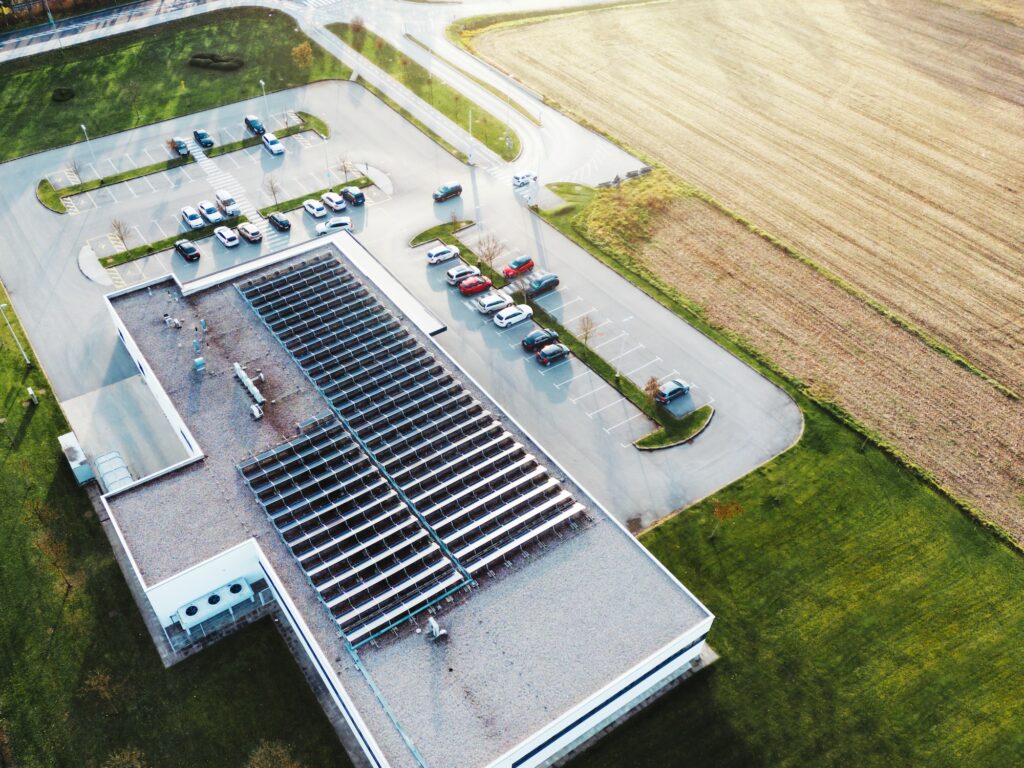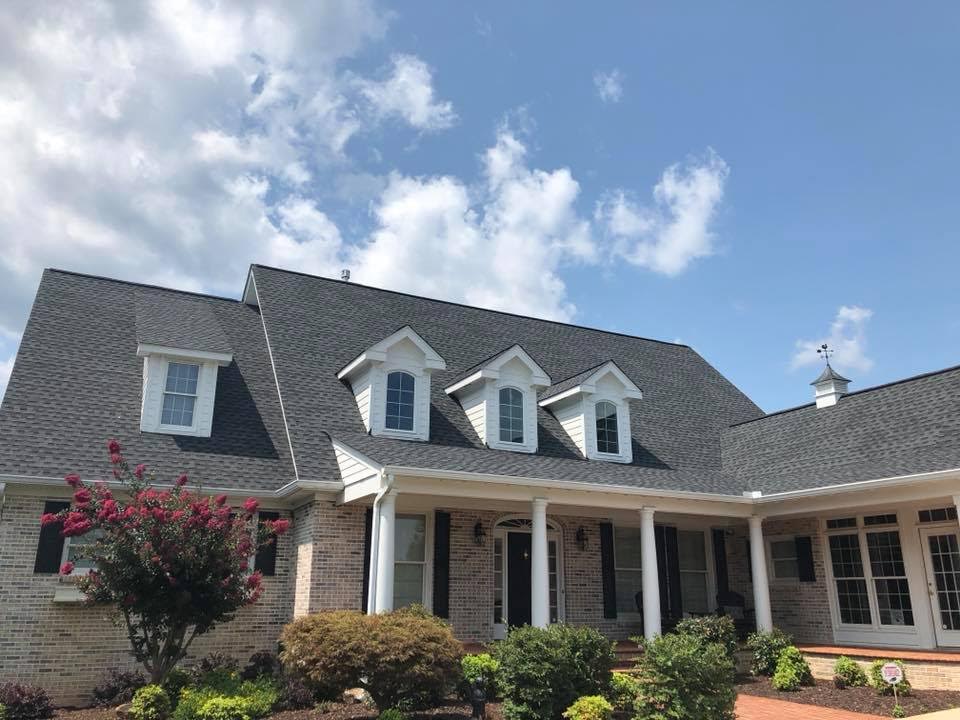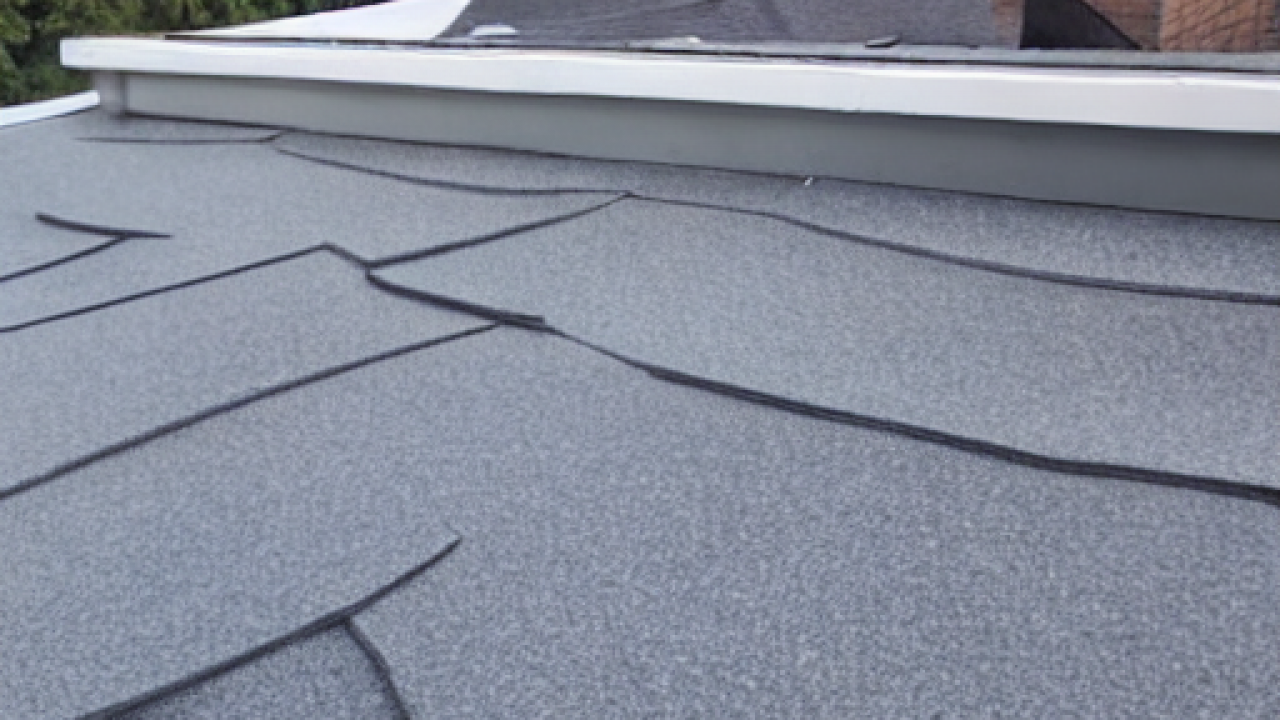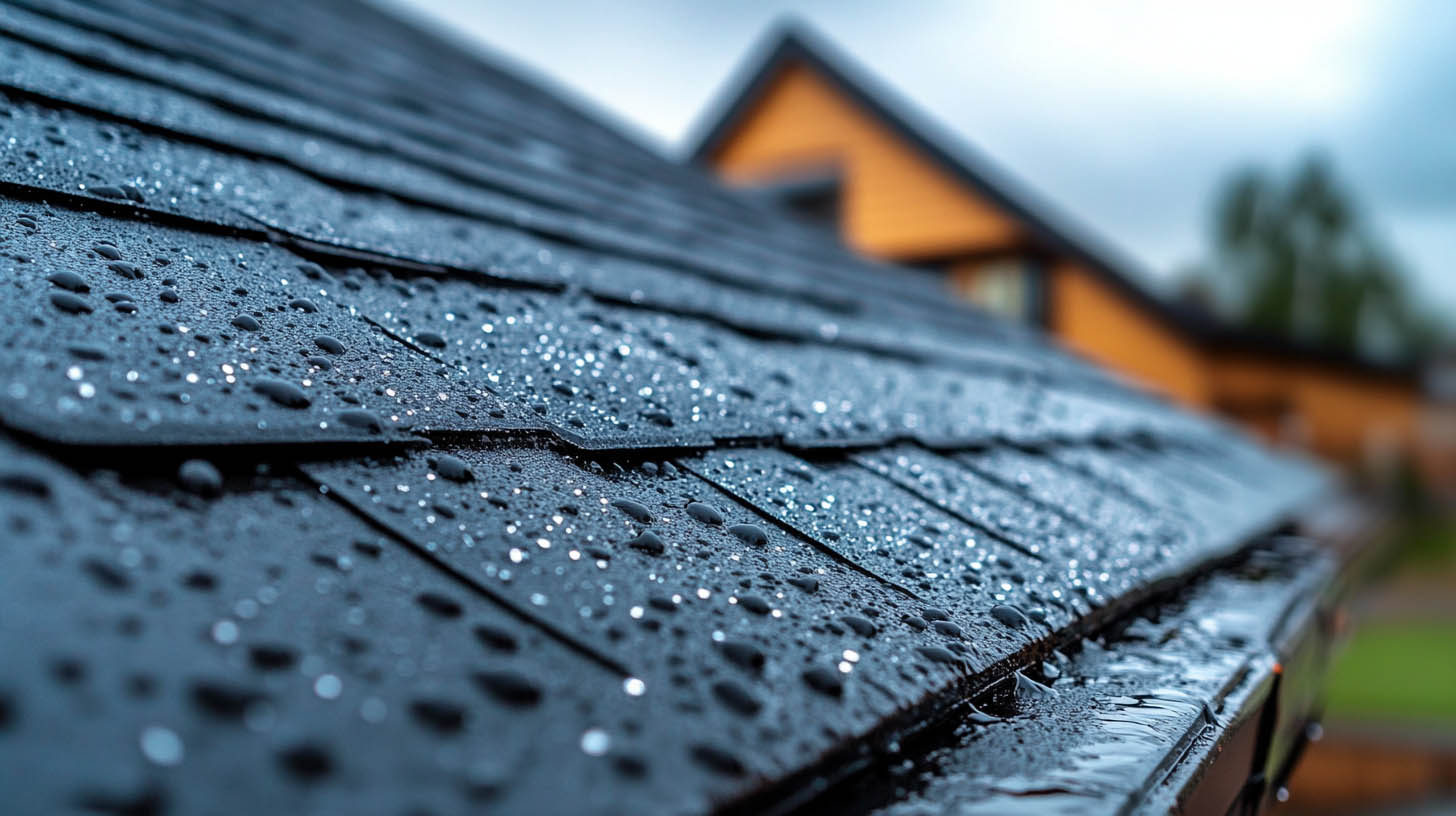Welcome to the blog on Flat roofs by United Contracting & Roofing, the leading roofing company offering flat roof repair service in Atlanta, GA.
This article aims to provide a comprehensive guide to flat roofs, focusing on facts, repair methods, and common problems associated with this type of roofing. The importance of understanding the structural aspects of flat roofs will be discussed, along with exploring various types of materials used in their construction. Common flat roof repairs will be explored in detail, including signs of damage and effective repair strategies. Maintenance tips for prolonging the lifespan of flat roofs will also be provided. Additionally, the article will cover the significance of energy efficiency and insulation in relation to flat roofs. Techniques for waterproofing these structures will be examined as well. Finally, readers will understand when a complete replacement may be necessary for a flat roof. At United Contracting & Roofing, we strive to present reliable information that can aid individuals in understanding and addressing concerns related to flat roofs.
Key Takeaways
- Regular inspections by professionals are necessary to identify issues early on and prevent extensive damage or expensive repairs.
- Proper maintenance, including addressing issues promptly and clearing debris that may obstruct water flow, can extend the lifespan of flat roofs.
- Improving insulation and energy efficiency is crucial for reducing energy costs and enhancing comfort in buildings with flat roofs.
- Waterproofing techniques, such as applying a reflective coating and ensuring proper drainage, are essential for preventing leaks and preserving the structural integrity of flat roofs.
Understanding Flat Roof Structures
Understanding the structural components of flat roofs is crucial for gaining insight into their design and functionality. Flat roofs are a popular choice for commercial buildings due to their cost-effectiveness, easy installation, and ability to accommodate HVAC units and other equipment. They require regular maintenance and repair to ensure their longevity.
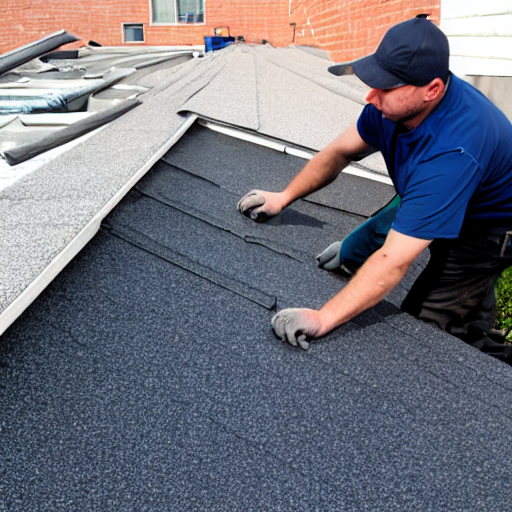
The first key component of a flat roof is the roofing membrane. Roofing membrane is typically made of modified bitumen or single-ply membranes like EPDM or PVC. The membrane is a waterproofing layer that prevents water from seeping into the building. Over time, the membrane may develop cracks or tears, leading to leaks and water damage.
Another important component is the insulation layer. Insulation helps regulate temperature by preventing heat transfer between the roof and interior space. Common insulation materials include foam board, mineral wool, or spray foam. Proper insulation is essential for energy efficiency and preventing moisture buildup within the roof structure.
Flat roofs also feature a drainage system that allows rainwater to flow off the roof surface efficiently. This includes gutters, downspouts, scuppers, or internal drains, depending on the design of the building. Clogged or damaged drainage systems can cause water to pool on the roof surface, leading to deterioration over time.
Regular inspections by a professional flat roof repair service – United Contracting and Roofing – are necessary to identify any issues with these structural components early on. They have expertise in identifying signs of wear and tear in roofing membranes, ensuring proper insulation levels, and assessing the condition of drainage systems.
In conclusion, understanding flat roof structures is vital for effective repair and maintenance practices. Addressing issues promptly through regular inspections by experienced professionals like those at United Contracting & Roofing, the flat roof repair services can help extend the lifespan of flat roofs while minimizing potential problems associated with leaks or inadequate insulation.
Types of Flat Roofing Materials
Different materials can be used to construct flat roofs, each with unique properties and advantages. Here are four common types of flat roofing materials:
1. Built-up Roofing (BUR): This is one of the oldest and most traditional flat roofing materials. BUR consists of multiple bitumen layers, either asphalt or coal tar, alternating with layers of reinforcement material such as fiberglass or felt. The layers are then topped with gravel or a reflective coating to protect against UV rays.
2. Modified Bitumen: Similar to BUR, modified bitumen roofs have multiple layers. However, modified bitumen uses factory-made sheets applied to the roof surface instead of hot asphalt using heat or adhesives. These sheets are typically made from a combination of asphalt and synthetic rubber modifiers, providing increased flexibility and durability.
3. Single-Ply Membrane: This roofing material comprises large sheets rolled out onto the roof surface and then sealed together at the seams. There are two main types: thermoplastic olefin (TPO) and ethylene propylene diene monomer (EPDM). TPO is known for its energy efficiency and resistance to chemicals, while EPDM offers excellent weather resistance.
4. Metal Roofing: Metal roofs have gained popularity recently due to their longevity and durability. Common metals used include steel, aluminum, copper, or zinc alloys. Metal roofs can be installed as individual panels or as one continuous sheet over the entire roof surface.
United Contracting & Roofing, the trusted Atlanta, GA, flat roof repair company, advises that each type of material has its own set of advantages and considerations regarding installation cost, maintenance requirements, lifespan, and environmental impact. Homeowners or building owners must consider these factors when choosing the best material for their flat roof structure.
Common Problems with Flat Roofs
Flat roofs are prone to various issues, including water ponding, leaks, membrane damage, and inadequate insulation. One common problem with flat roofs is water ponding, which occurs when water accumulates on the roof surface instead of draining properly. This can lead to structural damage and leaks if not addressed promptly. Another issue is leaks, which can be caused by damaged flashings or deteriorated roofing materials. Leaks can result in water infiltration into the building, leading to moisture-related problems like mold growth and rot.
Membrane damage is another commonly seen problem with flat roofs. The membrane serves as a protective layer against external elements and helps ensure waterproofing. However, it can be susceptible to damage from UV radiation, extreme temperatures, foot traffic, and debris accumulation. Once damaged, the membrane loses its effectiveness in preventing water penetration.
Inadequate insulation is also a common concern for flat roofs. With improper insulation, heat transfer between the interior and exterior of the building becomes less efficient, resulting in increased energy consumption for cooling or heating purposes.
At United Contracting & Roofing, we understand the importance of regular inspections and maintenance to ensure the longevity and functionality of flat roofs. Our dedicated flat roof repair service is designed to address the most common problems associated with flat roofs effectively.
Our experts are skilled at identifying early signs of ponding, leaks, or membrane damage, allowing us to take prompt action before these issues escalate. With years of experience in the industry, our professionals are well-equipped to perform repairs using the most appropriate materials and techniques, ensuring immediate fixes and long-term durability.
We go beyond just repairs. Our team recognizes the significance of energy efficiency and thermal performance for flat roofs. We offer solutions such as installing additional insulation layers or upgrading existing insulation materials. These enhancements contribute to a more energy-efficient environment and minimize potential problems from inadequate thermoregulation.
At United Contracting & Roofing, our commitment extends to helping homeowners and building owners take proactive measures to maintain the integrity of their flat roofs. By addressing common problems proactively, you can extend the lifespan of your flat roof and ensure it continues to function optimally throughout its service life. Trust us to be your partner in safeguarding your investment and ensuring the long-lasting performance of your flat roofing system. Contact us today for top-notch flat roof repair services tailored to your needs.
Signs of Flat Roof Damage
One way to identify potential issues with flat roofs is by recognizing certain signs of damage that may indicate the need for repairs or maintenance. These signs can help homeowners and building owners take timely action to prevent further damage and costly flat roof repairs. Here are some common signs of flat roof damage commonly attended to by our expert team at United Contracting & Roofing:
- Water Leakage: One of the most noticeable signs of a damaged flat roof is water leakage inside the building. If there are visible water stains on the ceiling or walls, it indicates a problem with the roof’s waterproofing system.
- Ponding Water: Flat roofs are prone to ponding water, which occurs when water accumulates and does not drain properly due to poor roof slope or clogged drains. Ponding water can lead to structural damage, accelerate deterioration, and increase the risk of leaks.
- Blistering: Blisters, bubbles, or raised areas on the surface of a flat roof can indicate trapped moisture within the layers. If left untreated, this condition weakens the roofing material and may lead to leaks.
- Cracks and Splitting: Over time, exposure to extreme weather conditions can cause cracks and splitting in flat roof materials such as asphalt or modified bitumen. These openings allow moisture penetration, leading to further deterioration.
Recognizing these signs early on prevents more extensive damage and expensive repairs. Regular inspections by professionals can help identify these issues promptly before they escalate into major problems. Homeowners and building owners must promptly address any sign of damage through proper maintenance or by consulting a professional flat roofing company, such as United Contracting & Roofing, experienced in handling flat roof repair work.
Helpful Flat Roof Repair Tips
To effectively address issues with flat roofs, the following roof repair tips can help property owners maintain a durable and long-lasting roofing system. One important tip is to regularly inspect the roof for any signs of damage or wear. Inspection includes checking for cracks, blisters, or punctures in the roofing material. It is also crucial to watch for loose or missing shingles and any signs of water leakage on the ceiling inside the building.
Once the damage has been identified, it is essential to repair it to prevent further deterioration promptly. Small cracks or punctures can be repaired easily using adhesive patches that can be applied directly over the damaged area. Another helpful tip is to ensure proper drainage on the flat roof. Standing water can cause significant damage over time, so it is vital to clear any debris obstructing water flow off the roof. Regular cleaning and maintenance of gutters and downspouts are also necessary to ensure they function correctly.
Furthermore, a reflective coating can help protect a flat roof from excessive heat absorption and UV radiation. This coating acts as a barrier and helps extend the lifespan of the roofing material by reducing thermal stress.
Following these repair tips diligently, property owners can effectively address issues with their flat roofs and prolong their durability and longevity. Regular inspection and prompt repairs by a professional flat roof repair service such as United Contracting & Roofing are vital to maintaining a healthy roofing system while ensuring proper drainage and applying reflective coatings to further enhance its performance.
Hiring a Professional Flat Roof Contractor
When it comes to ensuring the excellence of your roofing system, United Contracting & Roofing stands as your premier choice. Our specialized flat roof repair service is designed to provide the unmatched expertise, safety, and quality your property deserves.
Why Choose a Professional Flat Roof Repair Service like United Contracting & Roofing:
- Expertise: Our seasoned professionals possess an in-depth understanding of diverse flat roof types, each with its distinct characteristics and requirements. With their wealth of experience, they can thoroughly evaluate your roof’s condition and offer tailored solutions rooted in their deep expertise.
- Safety: Working atop a flat roof demands meticulous safety measures. At United Contracting & Roofing, our experts are rigorously trained to adhere to stringent safety protocols when operating at heights. Equipped with the latest safety gear and techniques, we prioritize accident prevention and worker well-being.
- Quality Materials: We recognize that superior flat roof repair hinges on using top-tier materials. Our reputable status ensures access to premium-grade materials curated explicitly for flat roofs. By combining these quality materials with our skillful craftsmanship, we guarantee durability and a roofing system built to last.
- Help with Insurance: Should your commercial property suffer damage, our dedicated team will collaborate closely with your insurance provider to ensure a swift and effective resolution. Let us alleviate the burden of roof repairs and insurance proceedings, enabling you to concentrate on your business endeavors.
Our group of skilled roofing experts will complimentary assess your residential or commercial roof. We act on your behalf by leveraging our inspection findings to guide you through the insurance claim process pertaining to the damages incurred. Your designated representative from United Roofing will liaise with your insurance adjuster on your behalf. Subsequently, we arrange the necessary construction tasks for your establishment, whether repairing the roof or executing a comprehensive roof replacement. Rest assured, we’ll manage the entire process seamlessly.
Further, at United Contracting & Roofing in Atlanta, GA, our specialized flat roof repair service goes beyond mere restoration – it’s about delivering substantial savings and uncompromised quality. Through our proven expertise, we can often help customers retain 40% of replacement costs by revitalizing their existing roofs while ensuring they benefit from robust 20-year NDL warranties.
We don’t just install roofing that sheds water; we specialize in waterproof roofing solutions that provide unmatched protection. What sets us apart is our team of skilled in-house applicators, all on salary, ensuring the highest level of workmanship and consistency.
Our commitment to excellence is evident with a dedicated commercial project manager present on-site for every project. We deliver top-tier work and provide comprehensive guidance on insurance matters, leveraging our expertise to maximize claims for our clients.
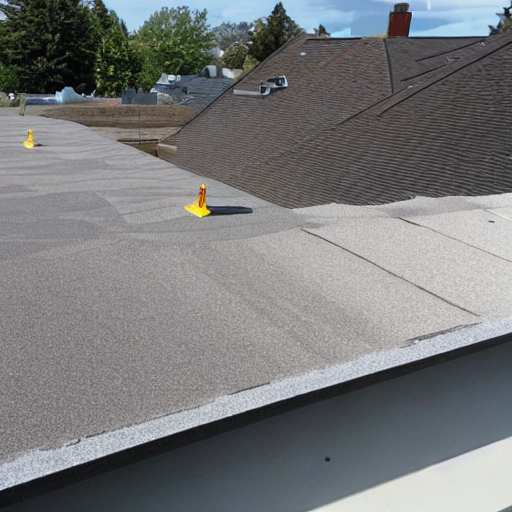
United Contracting & Roofing prides itself on offering warranties that set a new standard. Few roofers can match the level of coverage and peace of mind we provide. Above all, we prioritize our customers’ needs and uphold the highest standards of workmanship. Our unwavering dedication ensures that we always get things right. When you choose us, you choose a partner prioritizing quality, savings, and satisfaction.
At United Contracting & Roofing, our ethos revolves around delivering excellence in flat roof repair and maintenance. Entrusting your roofing needs to us guarantees you benefit from unparalleled expertise, stringent safety practices, premium materials, best warranties, and the assurance of insurance claims assistance. With us, your flat roofing system will thrive for years to come. Contact us today to experience roofing excellence like never before.
Maintenance Tips for Flat Roofs
Regular maintenance is crucial for preserving flat roofs’ structural integrity and longevity, ensuring peace of mind, and preventing costly repairs. Flat roofs are more susceptible to water pooling due to their horizontal design, making them prone to leaks and damage if improperly maintained. One important maintenance tip for flat roofs is regularly removing debris, such as leaves, twigs, or dirt, that may accumulate on the surface. Removing dirt and debris can be done using a broom or a leaf blower not damaging the roofing material.
Another important maintenance aspect is checking for any signs of damage or wear. Inspecting the roof at least twice yearly can help identify early signs of problems such as cracks, blistering, or loose seams. These issues should be addressed promptly to prevent further damage and potential leaks. Additionally, regularly inspecting and cleaning out gutters and downspouts is essential to ensure proper drainage and prevent water from accumulating on the roof.
In terms of preventive measures, applying a quality roof coating can significantly extend the lifespan of a flat roof. Roof coatings protect against UV rays, extreme weather conditions, and general wear and tear. They also provide added waterproofing properties, which help reduce the risk of leaks.
Overall, United Contracting & Roofing underscores the significance of consistent upkeep of flat roofs. Our specialized flat roof repair service is dedicated to helping you maintain your flat roof’s prime condition. With these fundamental insights and our swift intervention, property owners can sidestep burdensome expenses and extend the longevity of their roofing system. Trust us to be your partner in preserving the integrity of your flat roof.
Energy Efficiency and Insulation for Flat Roofs
Energy efficiency and insulation play a crucial role in maximizing the performance and sustainability of flat roofs. Flat roofs absorb and radiate heat, increasing energy consumption for cooling or heating purposes. Therefore, proper insulation becomes essential to reduce heat transfer and maintain optimal internal temperatures.
Insulation materials used in flat roofs should possess high thermal resistance properties to minimize heat flow through the roof assembly. Insulation materials provide excellent thermal resistance, preventing heat loss during cold weather and reducing the entry of external heat during hot weather. In addition to reducing energy consumption, proper insulation enhances indoor comfort by minimizing temperature fluctuations throughout the day. It also helps mitigate condensation issues that can lead to moisture-related problems within the roof structure.
For maximum energy efficiency, it is essential to consider additional factors such as reflective coatings or membranes with high solar reflectance index (SRI). These coatings help reduce solar heat gain by reflecting sunlight away from the roof surface, thereby decreasing cooling loads on the building.
Furthermore, regular insulation maintenance is necessary to ensure its effectiveness over time. Inspections should be conducted periodically by flat roof repair professionals to identify any damage or degradation that may compromise insulation performance. Proper installation techniques should also be followed to avoid air gaps or compression that can diminish thermal resistance.
By prioritizing energy efficiency and adequate insulation in flat roofs, United Contracting & Roofing assures that building owners can significantly reduce energy costs while enhancing occupant comfort and contributing towards sustainable practices.
Waterproofing Techniques for Flat Roofs
Waterproofing is crucial to maintaining the structural integrity and longevity of flat roofs. Flat roofs are more prone to water damage due to their horizontal surface, making waterproofing techniques essential in preventing leaks and other potential problems. Here are three crucial waterproofing techniques used for flat roofs:
1. Built-up Roofing (BUR): This technique involves layering multiple plies of roofing felt alternated with layers of bitumen or asphalt. The layers are then topped with a protective coating such as gravel or mineral granules. BUR provides excellent waterproofing properties and can withstand harsh weather conditions.
2. Single-Ply Membrane: This technique uses a single, continuous sheet of synthetic material that is mechanically attached, adhered, or ballasted to the roof surface. Common materials include EPDM (ethylene propylene diene monomer), PVC (polyvinyl chloride), and TPO (thermoplastic olefin). Single-ply membranes offer flexibility, durability, and resistance to UV rays.
3. Liquid Applied Waterproofing: This technique involves applying a liquid membrane directly onto the roof surface using spray equipment or rollers—the liquid cures into a seamless, fully adhered membrane that provides reliable protection against water infiltration. Materials commonly used in this method include acrylics, polyurethanes, and silicones.
Proper installation and regular maintenance are critical for all these waterproofing techniques to ensure their effectiveness over time. Regular inspections should be conducted to identify any signs of damage or wear that may compromise the waterproofing system’s performance.
Overall, implementing these waterproofing techniques is vital for preserving the integrity of flat roofs by preventing water penetration and subsequent costly repairs or replacements.
Flat Roof Replacement: When is it Necessary?
Flat roofs are known for their durability and longevity, but even the most well-maintained roofs will eventually require replacement. This leads us to our current subtopic: flat roof replacement and when necessary.
When considering a flat roof replacement, several factors come into play. One of the primary indicators is the age of the roof. As time passes, materials deteriorate, and roofs become more susceptible to leaks and other issues. Typically, a well-installed flat roof can last between 20 to 30 years. However, weather conditions and maintenance practices can significantly impact its lifespan.
Another crucial consideration is the extent of damage that has occurred. If routine inspections reveal extensive damage or frequent repairs are needed, it may indicate that a full replacement is necessary. Persistent leaks that cannot be effectively repaired also point towards replacing rather than patching the existing roof.
Additionally, building use or regulation changes may necessitate a flat roof replacement. For instance, if you plan to convert your commercial space into an area with heavy equipment or consider adding additional stories, reinforcing your roof’s structure might be required.
It is essential to recognize safety concerns when evaluating whether a flat roof should be replaced. If structural integrity is compromised due to sagging or rotting wood underneath the roofing material, immediate action should be taken to prevent accidents or further damage.
Determining when a flat roof needs replacing involves considering various factors such as age, the extent of damage, changes in building use or regulations, and safety concerns related to structural integrity. Regular inspections by professionals from United Contracting & Roofing can help identify these indicators early on so that appropriate measures can be taken promptly.
Conclusion
In summary, United Contracting & Roofing emphasizes the significance of a holistic comprehension of flat roofs, especially for residents and property owners in Atlanta, GA. Equipping oneself with insights into diverse flat roofing materials and prevalent issues empowers individuals to detect early signs of deterioration and apply proficient flat roof repair methods. Consistent upkeep, integration of energy-efficient solutions, and meticulous waterproofing practices stand as cornerstones for nurturing the enduring lifespan of flat roofs.
Additionally, recognizing the pivotal juncture when a flat roof necessitates replacement is paramount, mitigating the risk of exacerbating damages. By adhering to these guidelines and partnering with our expert team, individuals ensure the resilience and longevity of their flat roofs and the sustained functionality that upholds the value and security of their properties. At United Contracting & Roofing, we are committed to providing you with the knowledge, support, and solutions you need to optimize the performance of your flat roofing system.
Frequently Asked Questions
Are flat roofs more prone to leaks than pitched roofs?
At United Contracting & Roofing, we understand the unique challenges of flat roofs. Unlike pitched roofs, flat roofs lack the natural slope that aids water drainage. This design characteristic makes them more susceptible to leaks. Accumulated water can find its way through roofing materials, elevating the potential for water infiltration and resulting leaks. Our expertise in flat roof repair is geared towards addressing these challenges, providing practical solutions to safeguard your flat roofing system from leaks and water-related issues.
How long does a flat roof typically last before it needs to be replaced?
At United Contracting & Roofing, we recognize that the longevity of a flat roof is subject to multiple factors, including material choices, upkeep, and regional climate conditions. While these variables impact the timeline, the general range for the lifespan of flat roofs typically spans from 10 to 30 years. Our expertise in flat roof systems allows us to guide you in optimizing your roof’s lifespan through meticulous maintenance and effective solutions, ensuring your investment stands the test of time.
Can I install solar panels on a flat roof?
Certain criteria must be met when considering solar panel installation on a flat roof in Atlanta, GA. Ensuring the roof possesses robust structural integrity to bear the panel weight is essential. Our expertise at United Contracting & Roofing encompasses careful evaluation of your flat roof’s capacity. Moreover, our adept team guarantees precise and secure panel mounting, a crucial factor in maximizing safety and energy generation from your solar investment.
Are there any specific regulations or building codes that apply to flat roofs?
Indeed, United Contracting & Roofing recognizes that flat roofs are subject to distinct regulations and building codes. These imperative guidelines uphold meticulous standards for the construction, upkeep, and safety of flat roof installations. Our expertise ensures compliance with these regulations, addressing critical aspects like structural integrity, insulation, waterproofing, and fire resistance. Adhering to these standards guarantees your flat roofing system’s longevity, functionality, and safety.
What are the advantages and disadvantages of using a green roof on a flat roof?
Opting for a green roof on a flat roof, as recognized by United Contracting & Roofing, brings forth various benefits. This innovative choice offers enhanced insulation, effectively curbs stormwater runoff, and extends the overall lifespan of your roof. It’s crucial, however, to weigh these benefits against potential drawbacks, such as higher initial installation costs and ongoing maintenance expenses. Our expertise in flat roof repair and replacements allows us to guide you through these factors, ensuring you make an informed decision that aligns with your sustainability goals and budgetary considerations.

